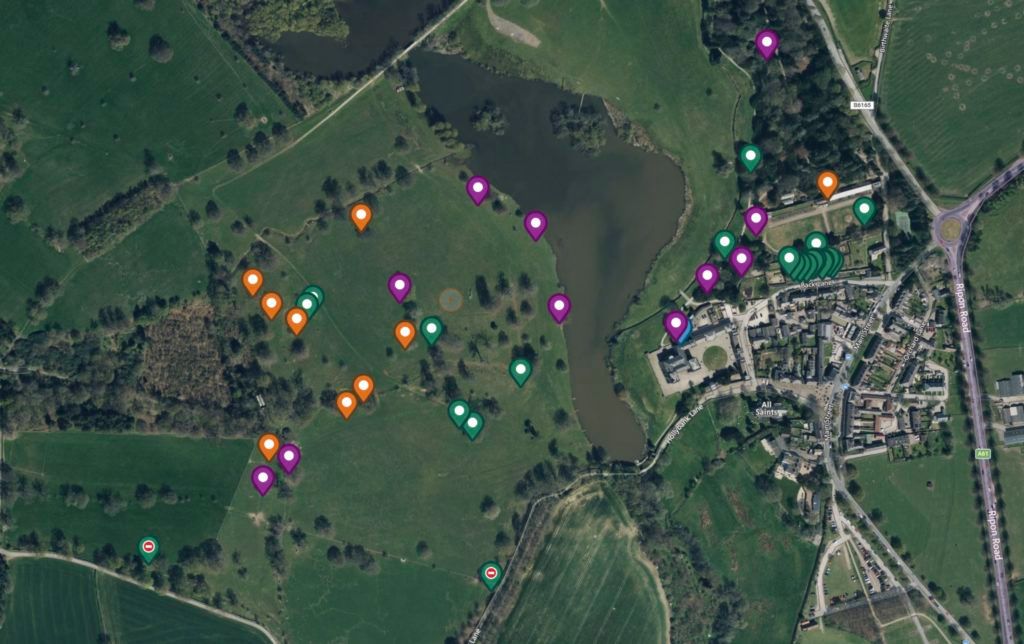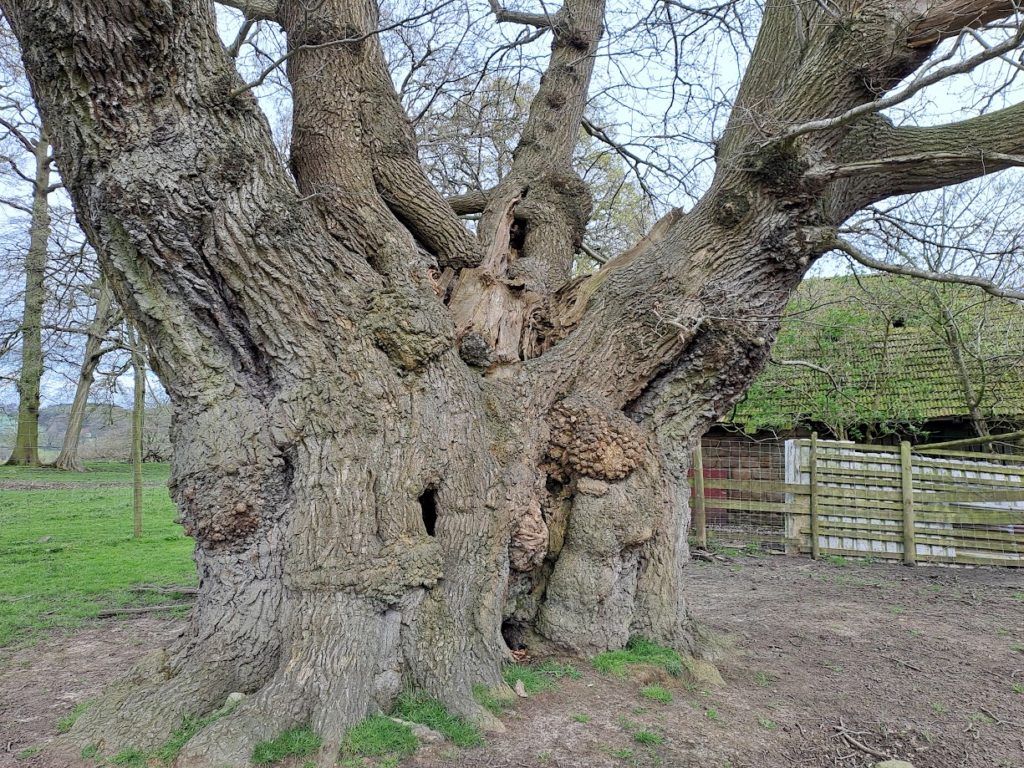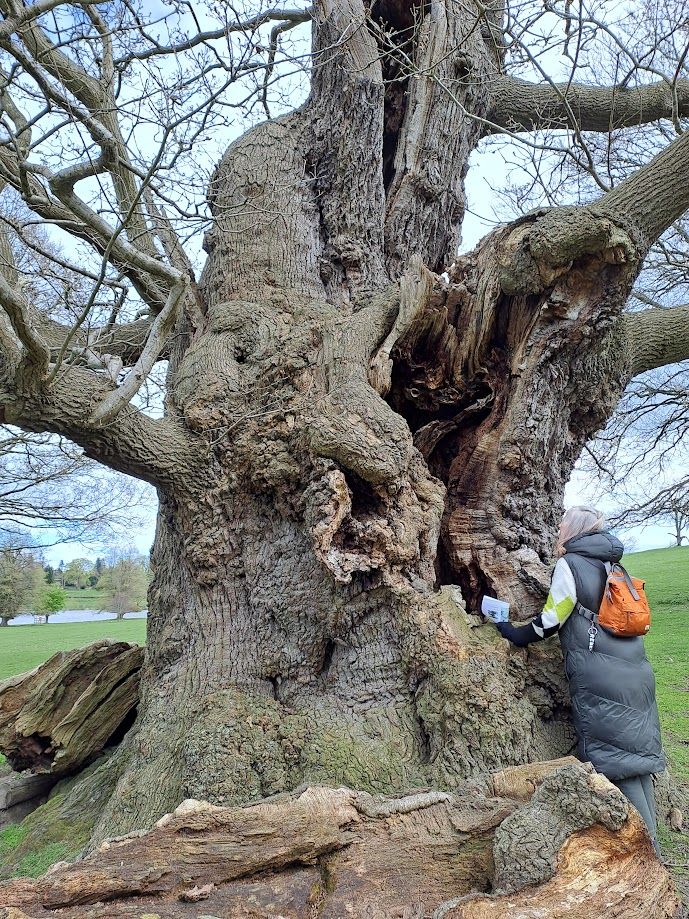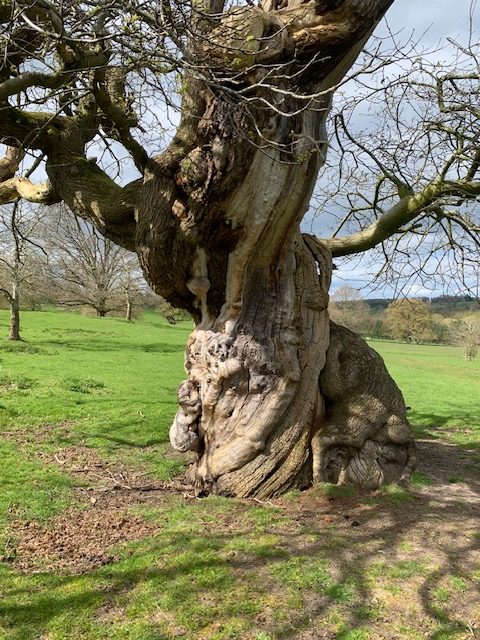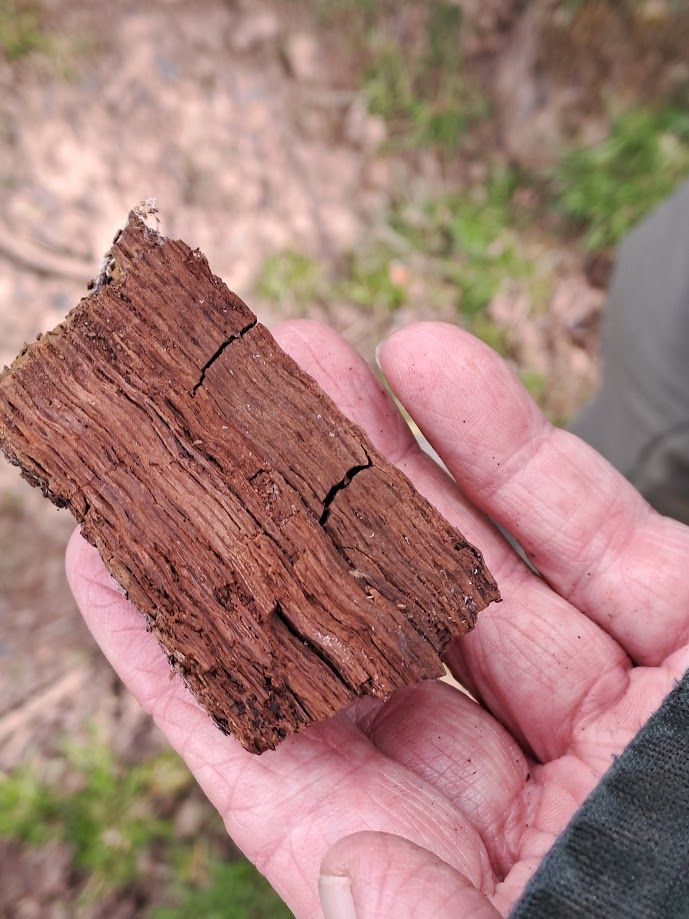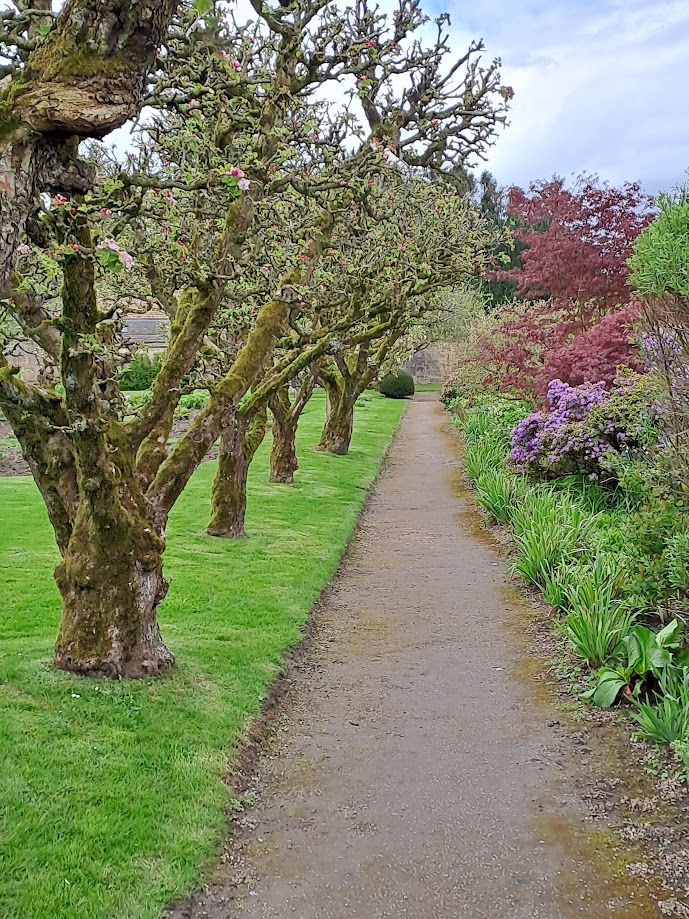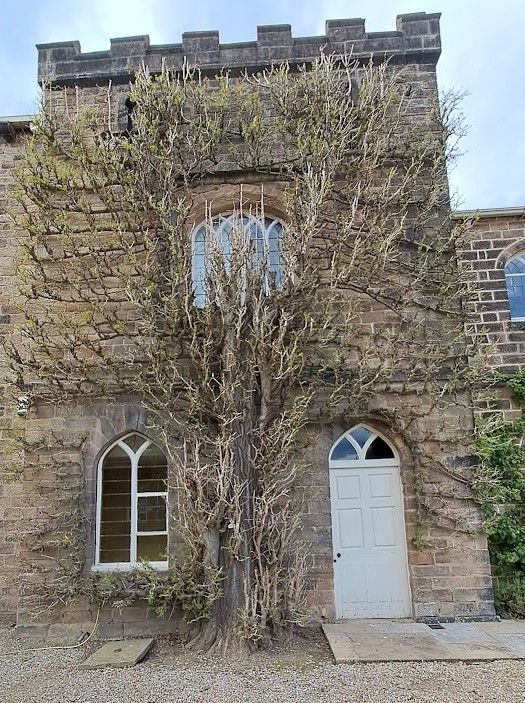Our visit to Ripley Castle grounds on 19 April had a rare bonus, we were absolutely bound to find and study as our target was trees! We were also very fortunate that Sue Wood had again agreed to lead our meeting, bringing her extensive horticultural knowledge.
The Ingilby family have been caring for their estate at Ripley for over 800 years. In the Deer Park particularly there are trees still standing that may date back that far, or even further. The UK is fortunate to have an impressive number of ancient trees still standing. The Ancient Tree Inventory, (ATI), is a citizen science project which collates and maps the distribution and condition of ancient and veteran trees. So far it holds more than 209,000 records, but this is possibly 10% of our nation’s trees. The map, copied from the ATI website, shows a bird’s eye view of part of the Deer Park at Ripley. You will see that we had a wide choice of trees to visit! The estate has given names to a number of their particularly characterful ancient trees.
We walked first to visit ‘Norman’, one of the oldest pollarded trees in the Deer Park. This tree is thought to be a survivor from before the Norman Conquest. Looking at Norman we could instantly see so many ancient tree characteristics; a knobbly and pot bellied trunk, with hollowing and cavities, water pockets, large burrs due to epicormic growth or disease, stubs left by broken branches. The trunk is actually hollow. Despite this Norman has remarkably little dead wood in the canopy, and may provide a home for creatures, mosses and lichen for many years to come.
Our next tree was Cyclops, another pollarded Oak. Cyclops is in rather a poorer condition, probably due its location on the southern bank of the old path, or Holloway, that leads up from the lake. The soil has eroded leaving the roots exposed. It may have been growing as part of a hedgerow set on the edge of the Holloway.
The photos below show just a few of the trees that we stopped to admire.
Dumpy, also pot bellied, showing plenty of burrs and evidence of epicormic twiglets on the trunk. Dumpy has a large hole at the base where you can see the rotting process in action. Despite this the tree shows good health and a lack of stag- headedness.
Grandpa is probably the largest and best example of a Sweet Chestnut in the Deer Park. Despite a lot of missing bark the spiraling fissures on the Sweet Chestnut bark shows very well. It has one branch that has grown down, then up at right angles – like a bent arm flexing its bicep. Many of the upper branches have lost their bark opening up opportunities for wood boring insects and fungi.
Our group also benefitted as Andy Woodall, Fungi expert, was with us. The following is just a small piece of his insight and knowledge that he gave us.
“Most of the veteran oaks and sweet chestnuts had their heartwood removed by fungi. The residue, after metabolisation, enters the soil under the tree and helps fertilise it. Further, the root system stays more or less the same whether the tree is hollow or not and with the reduced weight being held up by the same root mass it is likely to be less susceptible to wind-throw. There are few fungal species causing brown rots in broadleaf trees and even fewer that consume the heartwood of oaks and Sweet Cestnut. By far the two most likely species are Beefsteak Fungus, Fistulina hepatica, and Chicken of the Woods, Laetiporus sulphureus. Beefsteak, when in the early stages of metabolising the heartwood, appears to simply stain the wood brown as the ratio of lignin to cellulose increases. At this stage the timber becomes more valuable and is known in the trade as brown oak. However the final stage leaving only the brown lignin causes the wood to fracture into cuboid shapes that can be crushed in the hand to powder. Compare to a wall with the bricks dissolved leaving a lattice work of mortar!
Andy Woodall
The ATI also shows that a number of the apple trees in the Kitchen garden are also listed as veteran trees. There are varieties such as Beauty of Bath and Laxton Superb. A veteran Robinia, a Black Locust, can be found in the formal garden. Behind the bothy of the impressive Orangery stands a towering Ancient Sweet Chestnut.
Our last tree was the espalier Gingko biloba, or Maidenhair tree, dated 1890, that Margaret spotted in the Castle yard.
For those who wish to find out more there are various Ancient Tree guides on the Woodlands Trust web site www.woodlandstrust.org.uk The Ancient Tree Forum is also a source of information www.ancient-tree-forum.org.uk
Kerry Morrison
